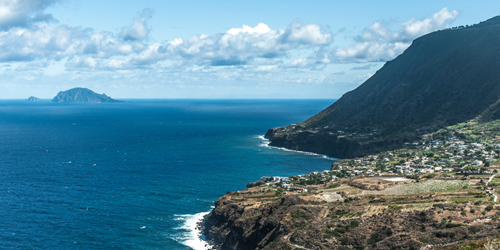Seeking Supernovae in Seafloor Sediments
Earth has borne witness to many galactic cataclysms during its history, but evidence in the geological record is scarce. Nearby supernovae could have showered Earth with various uncommon isotopes, but these typically decay too quickly to show up in sediments older than a few million years. Lorenzo Caccianiga of the Italian National Institute for Nuclear Physics and his colleagues now propose that muons, short-lived particles created when cosmic rays strike the atmosphere, could leave a more persistent trace [1]. In particular, they suggest that damage inflicted by muons upon minerals now lying beneath the Mediterranean Sea could provide a record of supernovae that occurred roughly 6 million years ago.
Around that time, shifting tectonic plates closed the Strait of Gibraltar, isolating the Mediterranean from the Atlantic Ocean and causing it to dry up. For half a million years (until the strait reopened and the basin refilled), minerals that precipitated from the shrinking sea were exposed to the sky—and to any muons generated by nearby supernovae.
Caccianiga and his colleagues simulated interactions between muons and nuclei inside those minerals to determine whether the subatomic particles could have left detectable tracks—linear defects in the crystal lattice. In the simulations, they varied the supernova’s distance from Earth, as well as the depth to which the minerals were submerged. Their calculations indicated that a mineral exposed during a nearby supernova should host up to 9 times more tracks than the same rock under quieter skies. If the supernova happened when the mineral was underwater, however, the increase would be negligible.
The researchers say that analyzing such tracks in once-exposed seafloor offers a new way to measure ancient cosmic-ray fluxes.
–Rachel Berkowitz
Rachel Berkowitz is a Corresponding Editor for Physics Magazine based in Vancouver, Canada.
References
- L. Caccianiga et al., “Sedimentary rocks from Mediterranean drought in the Messinian age as a probe of the past cosmic ray flux,” Phys. Rev. D 110, L121301 (2024).




